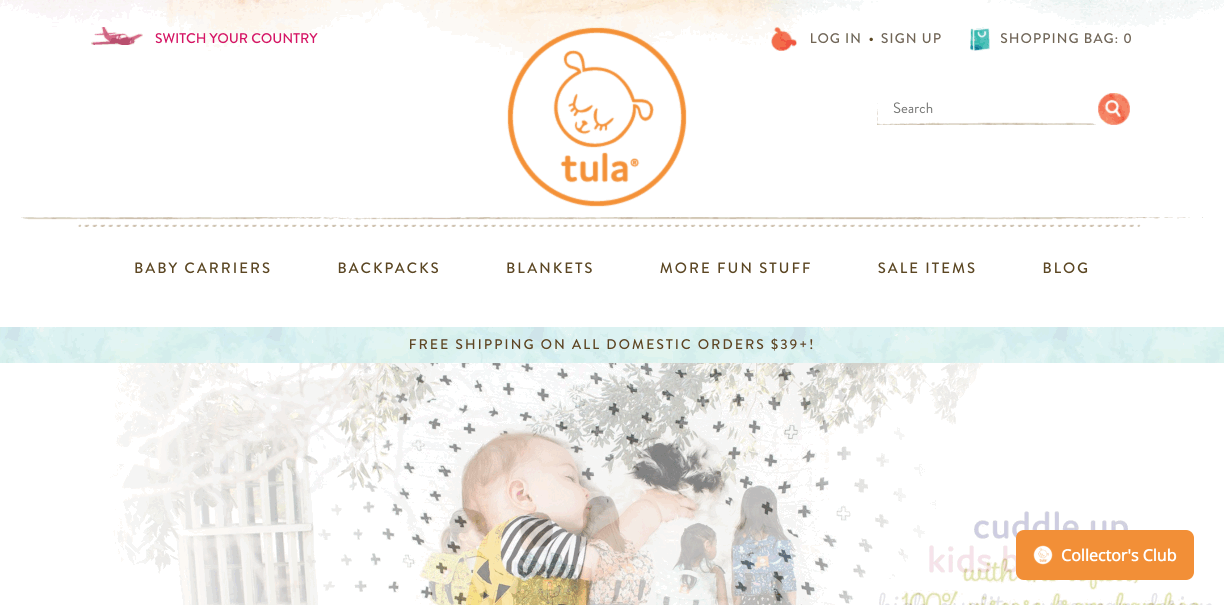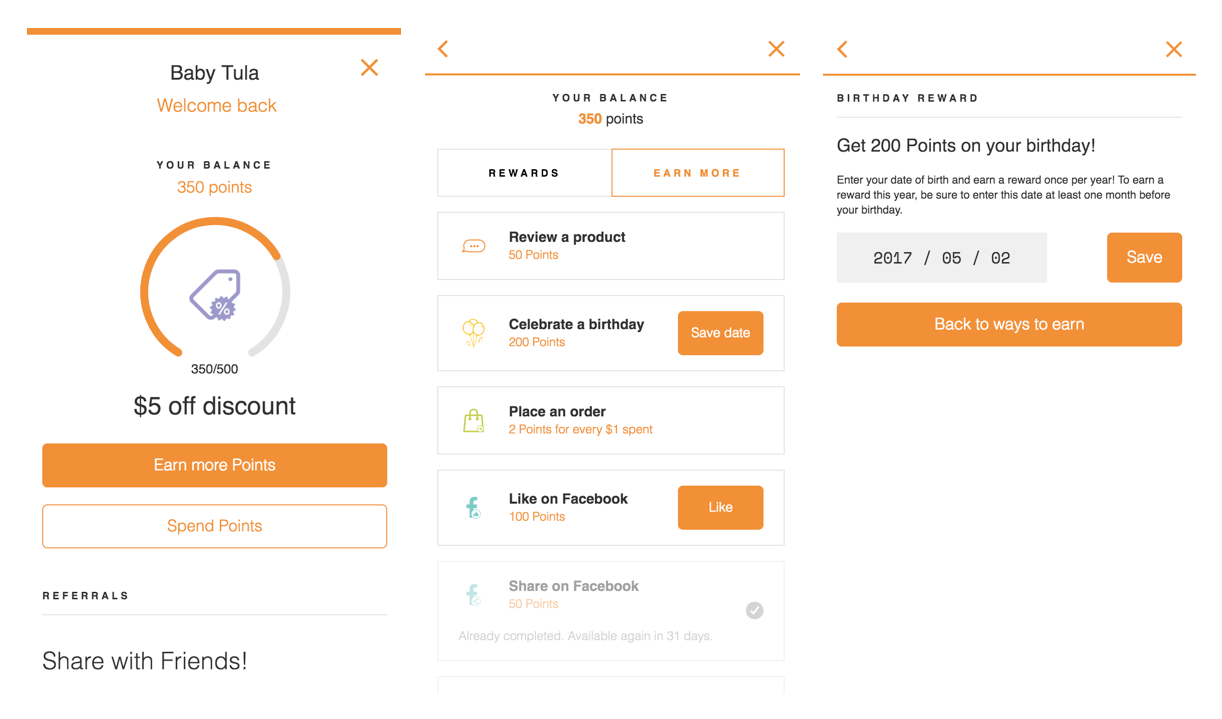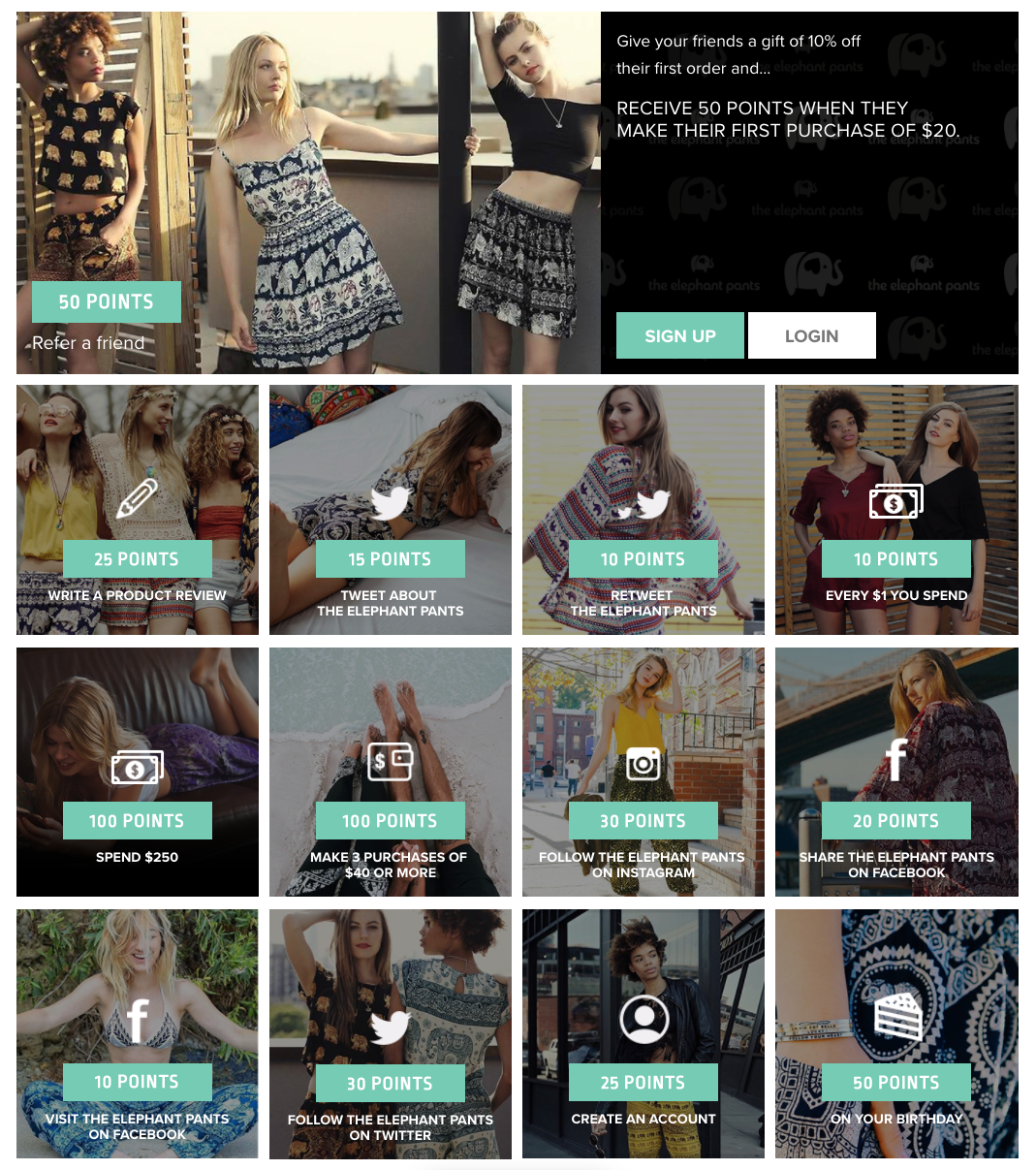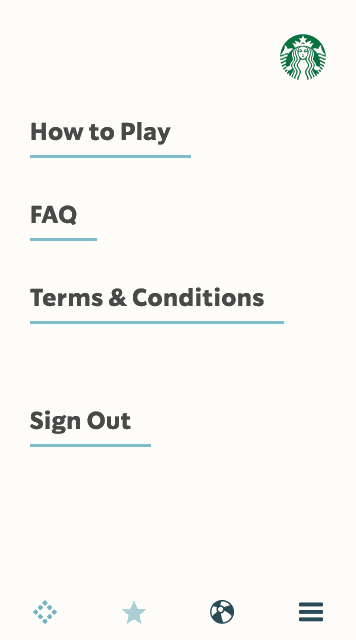Ecommerce loyalty programs — also known as, rewards programs — increase retention, purchase frequency, lifetime customer value, and referrals.
The best offer a combination of free gifts, exclusive discounts, early product releases, and points for product redemptions. Along with a wealth of data and practical insight, this guide highlights how:
- Pura Vida Bracelets increased referral sales by 300%
- TheCHIVE’s gamified program drives $135,000 per month
- Evy’s Tree generated 83X ROI and lifted return customers 58%
- Dr. Axe’s members spent $2.35M more than non-members in 90 days
By every imaginable metric, loyal customers are the lifeblood of business.
And yet, according toBain & Company, “60-80% of customers who describe themselves as satisfied do not go back to do more business with the company that initially satisfied them.”
Loyalty programs provide powerful motivation for buyers to create accounts, come back, and spend more. Even better, they create meaningful connections.
Today, rewards programs borrow elements from psychology, behavioral economics, and game design.
They transition the focus from percentage off, points earned, and sign-up bonuses to more experiential rewards like interest-aligned gifts, surprise upgrades, or exclusivity-based milestones.
Of course, all that can be a bit esoteric. That’s why we’ve collected …
25 strategies based on 36 examples and over 100 real data points from the best ecommerce loyalty programs and retail rewards:
- Know the Success Factors
- Eliminate the Loyalty Killers
- Brand Your Program
- Build a Community
- Invite Before, During & After
- Put the Offer Front and Center
- Communicate Benefits Clearly
- Make Redemption “Crazy Easy”
- Keep It Simple, Stupid
- Integrate Rewards at Checkout
- Focus on a Single Ask
- Add Urgency at Every Step
- Let Customers Sell for You
- Incentivize Experiences
- Use Tiers as Multipliers
- Tie Tiers to Spending Levels
- Reward UGC
- Go From Free to VIP
- Don’t Be Afraid to Get Paid
- Put Money Where Your Mouth Is
- Send Event-Triggered Emails
- Gamify Engagement
- Level Up Beyond the Basics
- Let Your Tiers Run Wild
- Take Loyalty Offline, Online & Back Again
Want to save this special report for later?
You can. Inside, you’ll get breakdowns and lessons from all 25 strategies, 36 real-world examples, and over 100 stats to back them up:
Download the full guide here
1. Know the Success Factors
Naturally, the first strategy is to know and major on the factors that influence brand loyalty itself. This may sound obvious, but far too many loyalty programs fail by not starting with a solid foundation.
According to Accenture and Statista, the top two reasons customers give when evaluating loyalty, in general, relate to respect (only after those leading factors do more program-related reasons come into play):

As applied to loyalty programs, the top three reasons programs succeed, as reported by the 2017 COLLOQUY Loyalty Census are:
- Easy to use: 53%
- 我很discounts: 39%
- Easy to understand: 37%

2. Eliminate the Loyalty Killers
Unfortunately, getting a customer to sign up for your loyalty program in no way guarantees success.
In fact, the majority of program members — 54% — are “inactive.”
Why? Again COLLOQUY sheds light on the top reasons members abandon a loyalty program:
- Took too long to earn points or rewards: 57%
- Did not provide rewards I was interested in: 53%
- Program sent too many communications: 38%
- Communications were irrelevant: 36%

3. Brand Your Program
The world’s best reward programs are all focused on the complete experience. Brands like Sephora, Starbucks, and others sweat the small things that show customers how seriously they take loyalty.
From an aesthetic perspective, start by branding your loyalty program the same way you would a new product collection or major campaign:
- Give your program a name that correlates to what makes your business unique
- Connect the program’s look, feel, and tone to the rest of your brand
- Design a custom program logo that stands out
4. Build a Community
人们很容易让你的程序rewarding orders. Community engagement, however, is a far better goal in the long term.
“A focus on orders,” Smile.io’s Alex McEachern says, “makes your program feel transactional. But, combining it with other ways to earn — like social follows, leaving reviews, and sharing with friends — will make it a truly engaging experience.”
Creating a sense of community was the ultimate goal forEvy’s Tree Who’s Hooreward program. Smile helped Evy’s Tree launch a rewards program that was on brand, simple to implement, and easy for customers to use.

As a result,Evy’s Tree saw…
- 83X return on investment
- 65% redemption rate overall
- 58% repeat customer rate increase
- $1,032 monthly ad spend reduction
Get members of your program to participate in as many reward touch points as you can. The more familiar and invested they become, the more engaged they will be.
5. Invite Before, During & After
When is the best time to invite visitors into a loyalty program? Before, during, or after their first purchase?
Advice on this front varies — as do the examples we’ll examine:
- Before purchaselets you leverage your program as frontline marketing
- During purchase, especially at checkout, can decrease cart abandonment
- After purchaseframes rewards as a surprising and delightful extra for retention
In other words, the only way to find out what works best for your audience is to invite visitors at each stage, measure the results over time, and optimize from there.
6. Put the Offer Front and Center
The more visible your program is, the better it will perform. You can use your homepage banner, emails, and any other onsite areas to increase visibility. It also goes a long way to have your program visible on every page.
Given the highly relational nature of its product,Baby Tula, places the “Collector’s Club” front and center through a chat-like CTA box across their site:

“We added Smile,” says Baby Tula’s Marketing Manager Jessica Carlson, “because it was an all-in-one solution with VIP, loyalty, and referrals. We initially wanted a referral program to increase referrals; however, the VIP program is great for customers to share branding of our Collector’s Club.”
Collector’s Club is Baby Tula’s first rewards program.
In one month, its 85,500 program members earned 4.21 million points and redeemed 1,084 rewards at a 24% redemption rate.

7. Communicate the Benefits Clearly
Tiers, points, rewards. None of that makes a bit of difference if the benefits are unclear, takes too much effort to earn points, or nobody understands how the program works.
Confusion is never intentional. It’s usually a byproduct of design-by-committee where the loyalty program’s champion is forced to compromise on short-term, top-of-funnel gains.
To make sure your benefits are clear:
- Have a one-sentence answer to the question: “What’s in it for me?”
- Make the math between actions and rewards easily divisible
- Use a dedicated page to explain how the program works
- Integrate redemption directly during checkout
In fact, let’s unpack the idea of clarity even more …
8. Make Redemption “Crazy Easy”
Nothing is more frustrating — and loyalty-killing — than earning points only to discover a complicated maze of rules, regulations, and redemption exclusions.
In lieu of limitations, supplement lineGHOSTintegrates their program with their complete product line, ensuring customers can redeem their points for any product available on their website.

With Swell, whose seamless product redemption integration won 2017 Shopify Commerce Award forBest Store Experience Using Shopify Scripts, GHOST’s shoppers took advantage of the options, making nearly 2,500 product redemptions in three months.
9. Keep It Simple, Stupid
The KISS principle isn’t an insult. It’s must follow advice. Especially when you’re introducing rewards for the first time or optimizing your program due to inactivity from members.
Thrive Causemeticsearned 18.4X ROI on their referral program in the first month by eliminating the fluff and keeping their customers focused on what mattered most to them: making purchases, referring friends, and earning discounts.

10. Integrate Rewards During Checkout
Allowing customers to claim rewards directly from their cart with one click makes your program work seamlessly with the natural user journey. UsingLoyaltyLion’s In-Cart Rewards and Instant Points, Dr. Axe increased …
- Reward redemption by 300%
- Average order value (AOV) by 36%, and
- Purchase frequency by 100% compared to non-members
Over one three-month period, loyalty program members spent $2.35M more than non-members.

11. Focus on a Single Ask
Choice is good … up to a point. The downside of offering too many choices is paralysis.
“There is diminishing marginal utility in having alternatives,” wrotepsychologist Barry Schwartz, “each new option subtracts a little from the feeling of well-being, until the marginal benefits of added choices level off.”
In other words, sometimes less is more.
UNTUCKit’s reward program— an increasinglyimportant part of their recent $200 million valuation-擅长。在入口处的忠诚计划lies one form, one reward, and one call-to-action (CTA):

No frills, no hassle, no problem. This campaign shines in its simplicity, a value that perfectly reinforces the style of the brand.
12. Add Urgency at Every Step
Pura Vida Bracelets approaches customer retention and lifetime value — the driving principles behind any loyalty program — with not one, but three strategies.
The first two are all about urgency.
Number one: thePura Vida Monthly Clubsends members three exclusive bracelets every month. To drive sign-ups through urgency, they’ve implemented a countdown timer that resets each month:

Number two: a traditional rewards program powered byTalkablemakes sharing via email or social easy.

Similar to the Club’s countdown timer, for friends to receive 50% off their first order, they must act within 24 hours.

Adding urgency at every step drives action, instead of letting your valuable offers sit idly by. Still, Pura Vida’s third approach is perhaps even more powerful …
13. Let Customers Sell for You
To make the most of their existing customers, Pura Vida uses an ingenious multi-channel program that combines Instagram, a tiered referral program (powered by Refersion), email marketing, and Shopify Plus’ ecosystem of apps and Partners.

The Rep Programharnesses the power of Pura Vida’s more influential customers. With over 110,000 micro-influencers participating:
- Sales from reps have increased 300% YoY
- AOV from referral sales are 11% higher than normal orders
- Customer CPA (cost per acquisition) associated with the rep program is just $3 versus a CPA 7X higher than other channels
When reps are accepted into the program, they receive their own discount code. They can also get started right away, as Pura Vida Bracelets provides photos for them to post on social media.
14. Incentivize Customer Experiences
Your store’s customer experience extends far beyond the moments of purchase and item arrival. It can involve a person sharing your store with a friend, following your store on social media, or reviewing products — activities all crucial to longevity and sustainability.
The Elephant Pants grew from an $8,000 Kickstarter campaign to$5 million in revenue in 2016by understanding the need for these tasks. As such,they reward them allto varying degrees.
The Elephant Pants offers big-ticket rewards for more difficult tasks, like referring a friend or spending $250 in a single order. They also offer smaller rewards for easier methods of getting the word out and nearly every conceivable customer experience.

They set their point redemption threshold relatively low, making it easy for people with points of all increments to enjoy rewards.
This tactic increased their social media marketing by 80 quality impressions per post while paying under $0.70 per new follower.
The Elephant Pants also make their rewards nonlinear, setting higher-point redemption prizes at a greater point-to-value ratio than those at lower tiers.

15. Use Tiers as Multipliers
Like The Elephant Pants,Best Choice Products (BCP) offers a wide array of ways to earn points, including user-generated content, reviews, and answering questions.

These are excellent ways to build community and retain customers, but BCP takes it a bit further. Utilizing Swell behind the scenes, BCP lets members multiple their points based on two VIP levels.
As a customer’s points add up, they are automatically moved through Bronze, Silver, and Gold. At each level, the very same actions as before now earn them 1.5x and eventually 2x more points.

Think of it as a self-perpetuating rewards cycle: the more points a customer earns … the faster they earn even more.
16. Tie Tiers to Spending Levels
Somewhat similarly,100% Pure uses LoyaltyLion’s tier functionality loyalty tiersto motivate and retain customers. Customers are encouraged to increase their spend to gain access to a new tier and increased benefits such as free shipping or early access to new products.
A staggering 92% of 100% Pure’s members go on to purchase an additional five times after their fourth purchase.

On top of that, 100% Pure has generated over $244,000 in 18 months from referrals.
They do not leave referrals on all the time but switch on this feature for limited time periods to generate excitement around it. They also run email marketing campaigns to promote referrals while the campaign is running.
17. Reward User-Generated Content
eJuices believes in the power of their fan base, andoffers rewardsbased on the user’s positive experience with the brand. The company allows customers to earn points by promoting their brand on social media.

Tweeting, writing product reviews, and sharing on Facebook are just some of the ways you can earn points on eJuices.

This popular rewards program enables eJuices to build their community and generate positive, free product feedback and wider awareness.
18. Go From Free to VIP
Sand Cloud Towels offers boutique towelsanda chance to help save the marine environment. It’s a mission that resonates with many — in 2016,the company did $2.4 million in sales. Pairing this mission-driven brand with serious discounts, creates a laser-focused way to reach a targeted, interested, audience.
You can become anambassador of the brand for freeor you can sign up totheir monthly VIP subscription service.
To be an Ambassador, all a visitor has to do is enter their email and contact info. Ambassadors only need to be 13 years of age, and Sand Cloud donates 10% to non-profits. The system is not only a great way to grow the brand, it also follows the direction of a younger audience.

Their subscription service blends in a regular schedule with a consistent element of change — Who doesn’t love a surprise gift in the mail?

This inexpensive subscription can be canceled at any time and offers a unique way to fill a customer’s closet with quality gear.
19. Don’t Be Afraid to Get Paid
While most programs are free to members, which is meant to increase acquisition and adoption, placing your best benefits behind a paid service creates exclusivity.
Swell collaborated with BVAccel and ReCharge to do exactly that forFreshly Picked. The program not only rewards their most loyal customers, but also increased the number of customers who elected to pay an annual fee and subscribe to be members.

20. Put Money Where Your Mouth Is
Most loyalty programs incentivize repeat purchases. What do you do if you sell a product most will only buy once every five years?
Leesa cuts right to the chase为每一个推荐,提供75美元通过贝宝。自84% of shoppers trust recommendations from people they know, Leesa’s bonuses will make them money and mobilize their existing customer base.

This program works because, unlike a shirt or towel, mattresses are expensive, infrequent, purchases, and it can take a lot of convincing to bring someone to the checkout.
Leesa also makes inviting friends easy with a pre-filled email you can customize onsite before sending.

21. Send Event-Triggered Emails
Kopari Beauty uses events — such as “referral completed,” “VIP tier earned,” and “coupon redeemed” — to trigger well-timed emails. Incremental revenue from trigger based emails are, on average, about three times the cost of Swell’s fees.

22. Gamify Engagement
theCHIVE’s loyalty program generates …
- 6,800 referred visitors per month
- $135,000 per month via rewards
- 6% of their annual revenue
How? Part of the answer lies in gamification.
With help from LoyaltyLion, theCHIVE runs onegamified loyalty program在三个连接网站,在te奖励n onsite activities including photo uploads, scoring, and social sharing.

They also use points to create leaderboards which rank the “Chivers.” Fans are able to quickly navigate from theCHIVE to The Chivery via the loyalty program and have the same points totals, which can be redeemed in store, turning fans into paying customers.

So far, the above examples have come from Shopify Plus businesses and Partners. Still, three more — Sephora, Nordstroms, and Starbucks — demand attention …
23. Level Up Beyond the Basics
Recently recognized by Fast Company as one ofThe World’s 50 Most Innovative Companies, Sephora’sBeauty INSIDERprogram is addictive.
The programdrew in 10.6 million members in 2016. In addition to offering standard fare — like free shipping and reward points on purchases — they release fresh products through the program twice a week.

If a customer spends more than $1,000 in a year, Sephora automatically upgrades their account to the “VIB Rouge” tier, providing members early access to Beauty INSIDER releases as well as first dibs on back-in-stock products:

VIB Rouge members get it all: not only are they offered early access to upcoming promos, but this insider access also grants a 15% discount code on numerous sales, when regular shoppers only get 10%. Naturally, this includes Sephora’s enormous Spring Sale.
As well, some products areonlyfor Rouge members.

Another way of looking at it is that, if you’renota VIB Rouge member, you might not get a chance to purchase your favorite Moroccan Dry Body Oil before the members clear out the sales rack.
There are three different levels of members. In addition to Rouge (spending $1000+/year), VIB members spend $350+/year with Sephora, getting them access to numerous features, products, and services.

Standard Beauty INSIDER members don’t have to spend anything to retain their membership, but get far fewer perks:

Sephora knows their customerswantto feel pampered, luxurious, and beautiful. Their top-of-funnel marketing and positioning make this possible, but their loyalty program makes it a reality.
Their positioning is so strong, many Sephora customers will tell you, spending $350 is not difficult. Reaching the middle tier of the program is pretty easy.
What’s brilliant about the middle tier is that it gives you just a taste of what’s at the next level with one free custom makeover, a touch more personalization, and the desire formore.
The leap from the middle tier ($350) to the top tier ($1,000) is challenging — but not impossible. This is where gamification comes in.
In video-game design, it’s not uncommon for the game to reward players with better multipliers, gear, or power-ups just before facing a difficult boss.
At Level 2 of Sephora’s loyalty program:
- Power-ups = Newly unlocked exclusive savings
- Gear = Points only Rewards Bazaar
- Multipliers = Double Points events
Each of these aspects of the program is designed to keep customers engaged and spending more, but having fun while they do it. In your own loyalty program, you might also incent earning extra points by encouraging customers to buy gifts or refer friends just so you can have some variety in your messaging.
Use this idea of discrete campaigns by targeting loyalty segments who are stagnating, but are one or two good carts away from the next tier, and you can start moving more customers into higher-spending segments.
24. Let Your Tiers Run Wild
According toits 2017 annual report, Nordstrom Rewards loyalty program increased its membership base by 35% to 10.5 million customers. Revenue from Nordstrom Rewards represented 51% of sales, an increase from 44% in 2016.
Part of its success is aunique reward program offers differentbenefits at each spending level. Initially, the program only offered rewards to members who held (and paid with) Nordstrom credit and debit cards.

You can now be a member without their cards, though you’ll earn rewards at half the pace of cardmembers.

Nordstrom’s famous notes become dollar values that can be gifted and put toward tactile experiences like alterations.
With exclusive behind-the-scenes adventures and early access to Nordstrom’s Anniversary Sale, the upper echelons of this program can lead to significantly more spending — and saving.
25. Take Loyalty Offline, Online & Back Again
The future of retail belongs to brands that canbridge the online-to-offline divide, and Starbucks does this masterfully.
Starbucks drives members into their retail stores with perks like ordering ahead, free refills, events, and offers. Like many others, they also offer a point economy in their form of currency: “stars.”

With gold status, they craft a beautiful card for each member and incentivize purchases with monthly double-star days.
And that’s just the tip of the iceberg.
Starbucks frequently leverages social media (for example,enabling friends to buy coffee for each otherresulting in over $180,000 in sales), and completes the cycle by taking in feedback about the offline experience through their My Starbucks Idea site online.

In 2016, Starbucks implemented plans to send over400,000 variations of emailsto personalize their communications with customers. This is crucial becauseresearch findsthat 69% of shoppers close down accounts and subscriptions as a result of irrelevant marketing and poor communication.
Lastly, Starbucks takes gamification to a whole new level through seasonal and limited-time microsites linked to customer accounts:

What’s all that loyalty add up to?
14.9 million active monthlyStarbucks’s rewards program members and — perhaps most staggering — by the end of 2018, Starbucks will have “23.4 million users in the U.S. who have made an in-store mobile payment in the previous six months” making it the most popular mobile payment system in the U.S.

Loyalty Program Ecommerce Platforms
In this world of distraction and endless competition, keeping customers connected to your brand becomes more difficult than ever.
Fortunately, you now understand the psychology and mechanisms that drive some of the world’s best loyalty programs.
Loyalty Partners mentioned in this guide:
Invest in a loyalty program and your customers will keep coming back for more.
Read More
- “情感上的电子商务”增加重复购买80%, Retention 58%
- A Crisis Communications Plan for Brands
- Multi-Channel Customer Acquisition: 7 Tips from $3.7M+ in Ad Spend
- Black Friday Ecommerce: 15 Ideas, Tips & Strategies to Increase Holiday Sales
- Hypefest 2018: O2O Examples from the Forefront of Marketing & Retail
- 10 Halloween Marketing Campaigns from Wickedly Profitable Ecommerce Brands
- Shipping and Supply Chain Best Practices from UPS, Deloitte, and 6 River Systems
- 10 Best Omni-Channel Retailers and What You Can Learn From Them
- 5 Easy Tips For Getting Started With Conversion Rate Optimization






